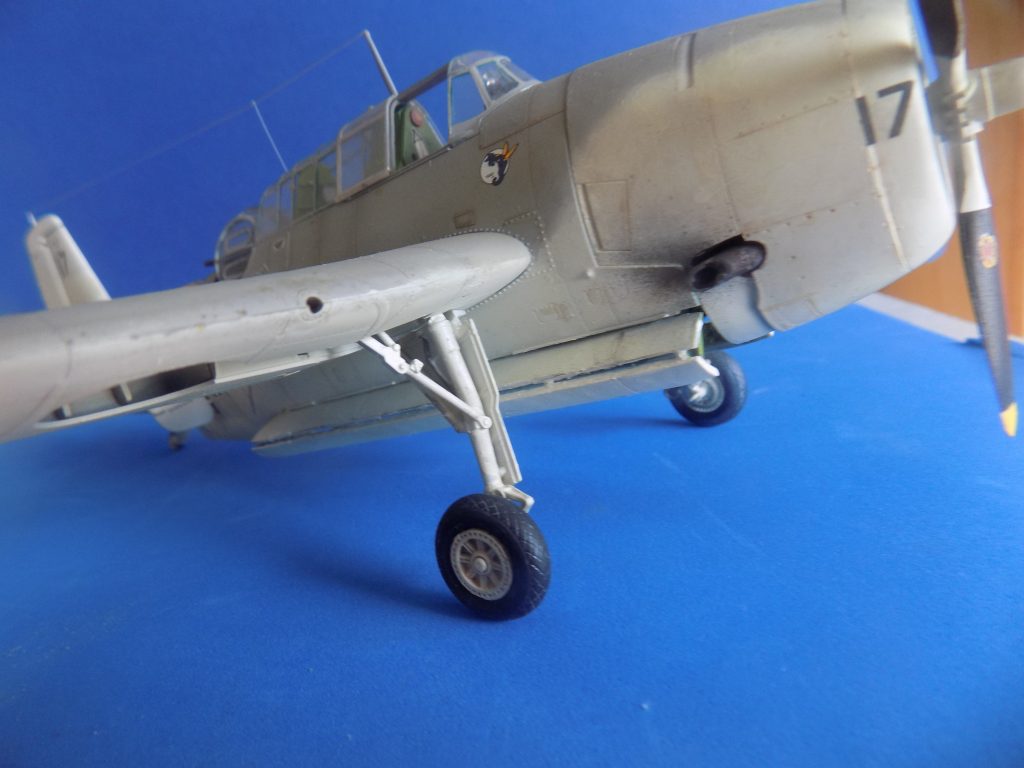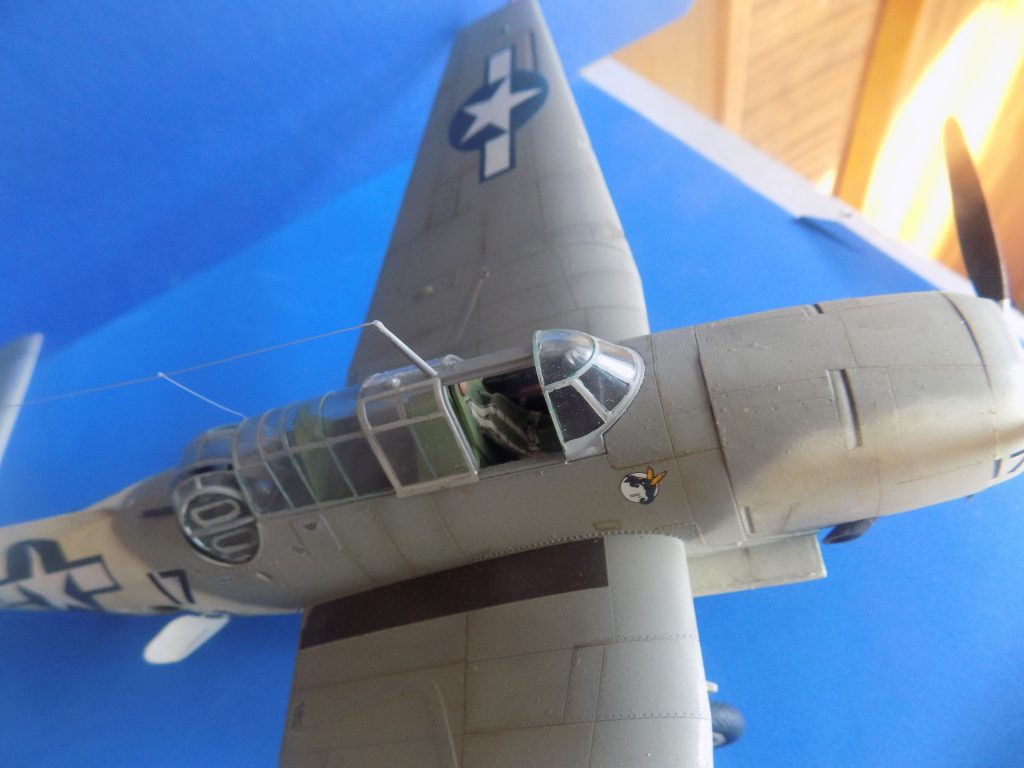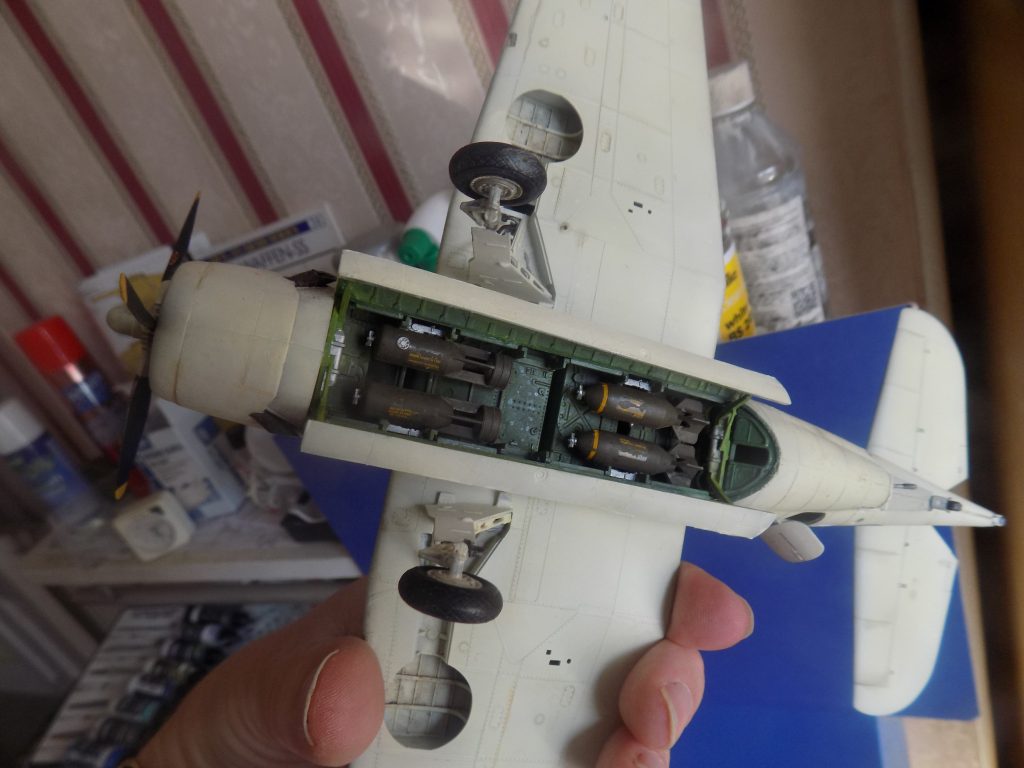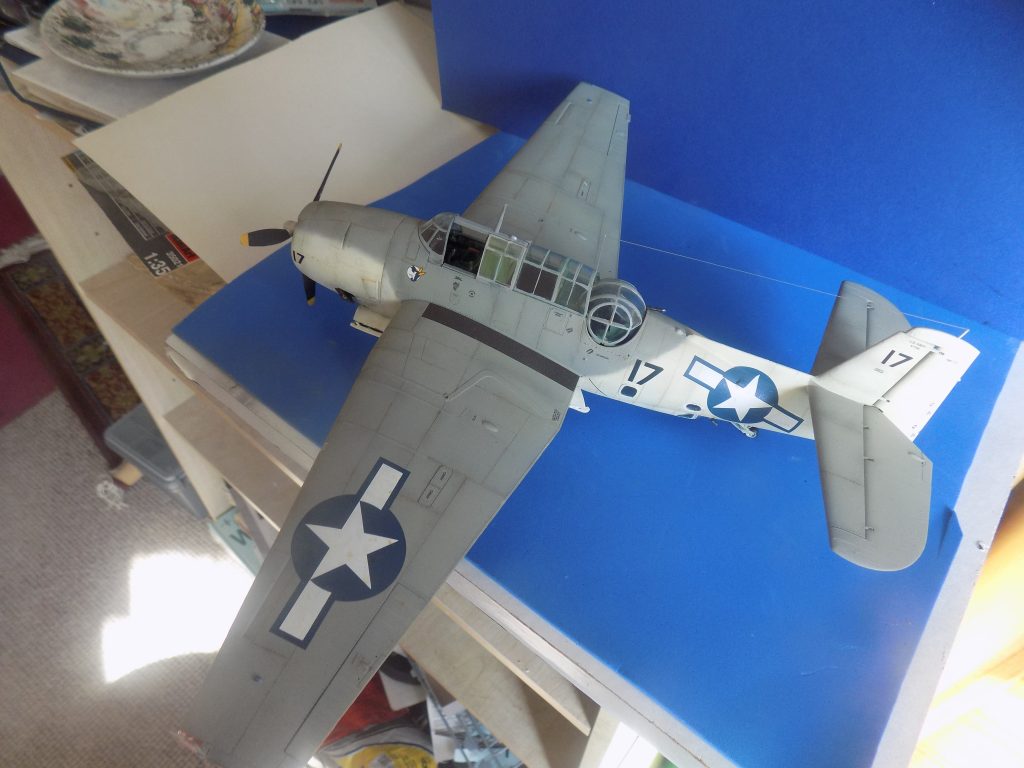















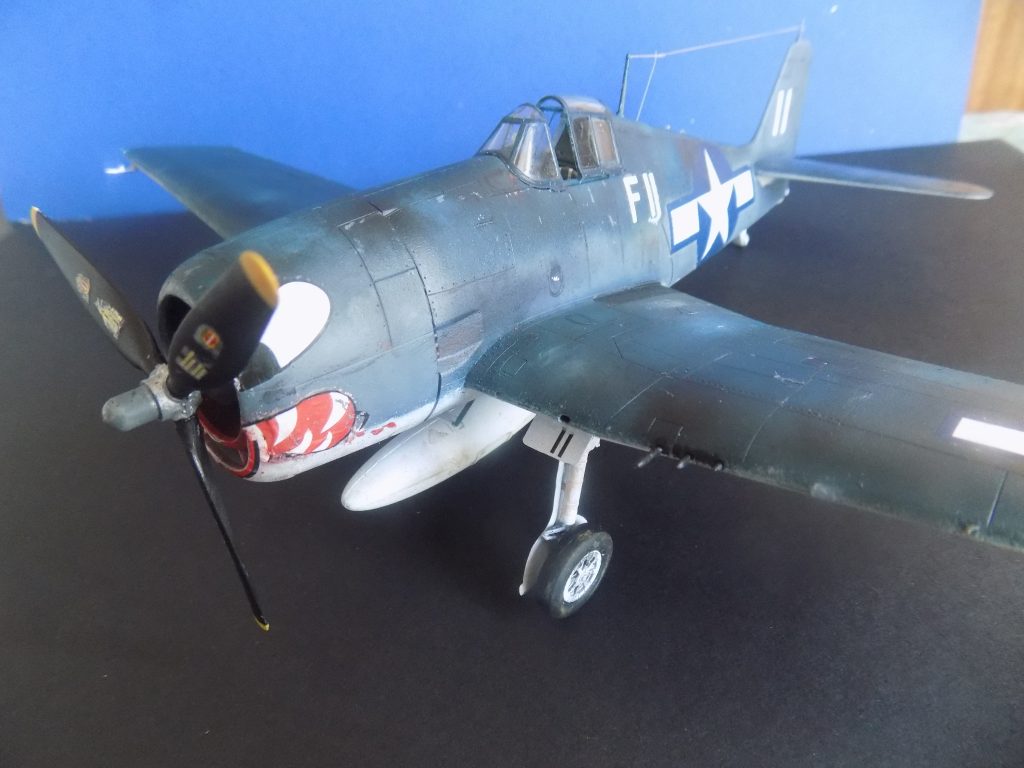
This is the second 1/48 scale Hellcat model I have made. The first, by Hasegawa, was very fine as you would expect from the Japanese manufacturer. It was only let down by the decals which were not opaque enough. Unfortunately, while attempting to airbrush over them, a slight mishap occurred-a load of model boxes from my stash fell on top of it and put paid to her glorious career!
This Hellcat is by Czech manufacturer Eduard. At first glance it seemed an excellent kit for a reasonable price. However, during construction, I found the fit was slightly out in the wings and fuselage and the instructions are a little unclear in places, especially with the incredibly complicated undercarriage structure. Nevertheless, I persevered only to find at the end the decals were incredibly thin and curled very easily. Still, I managed to get most of them on ok but I left off most of the tiny stencils which were barely visible. Overall, despite the great surface detail, Eduard kits in my opinion leave a lot to be desired, although you can’t really complain about the price of their cheaper ‘Weekend’ offerings.
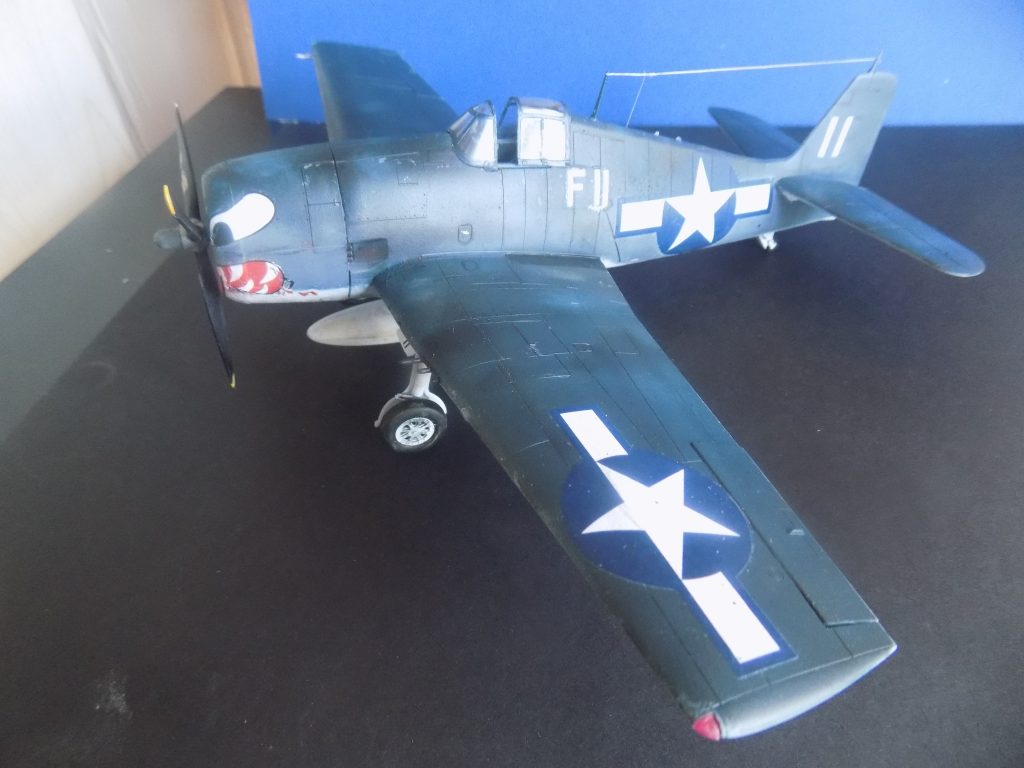
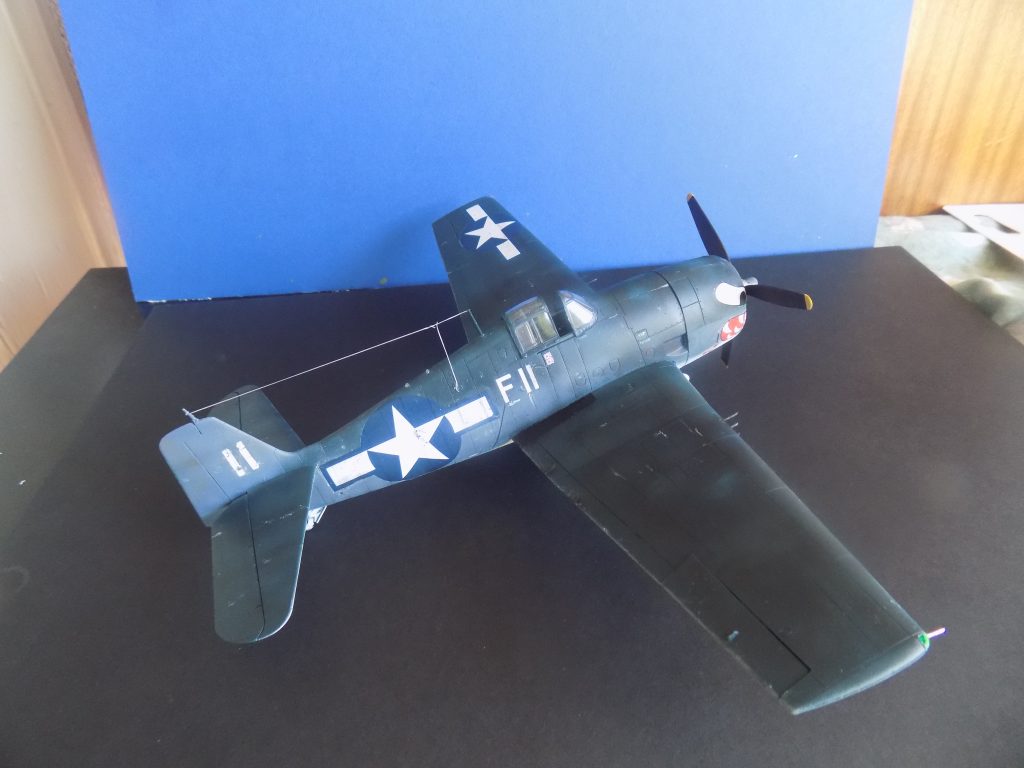
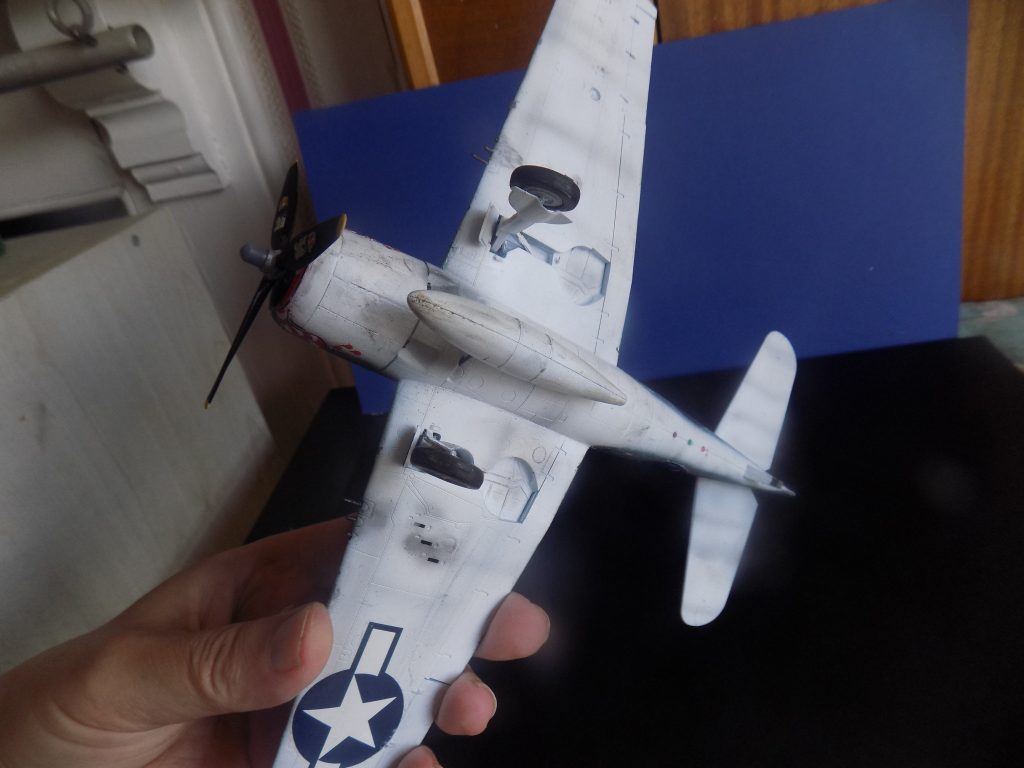
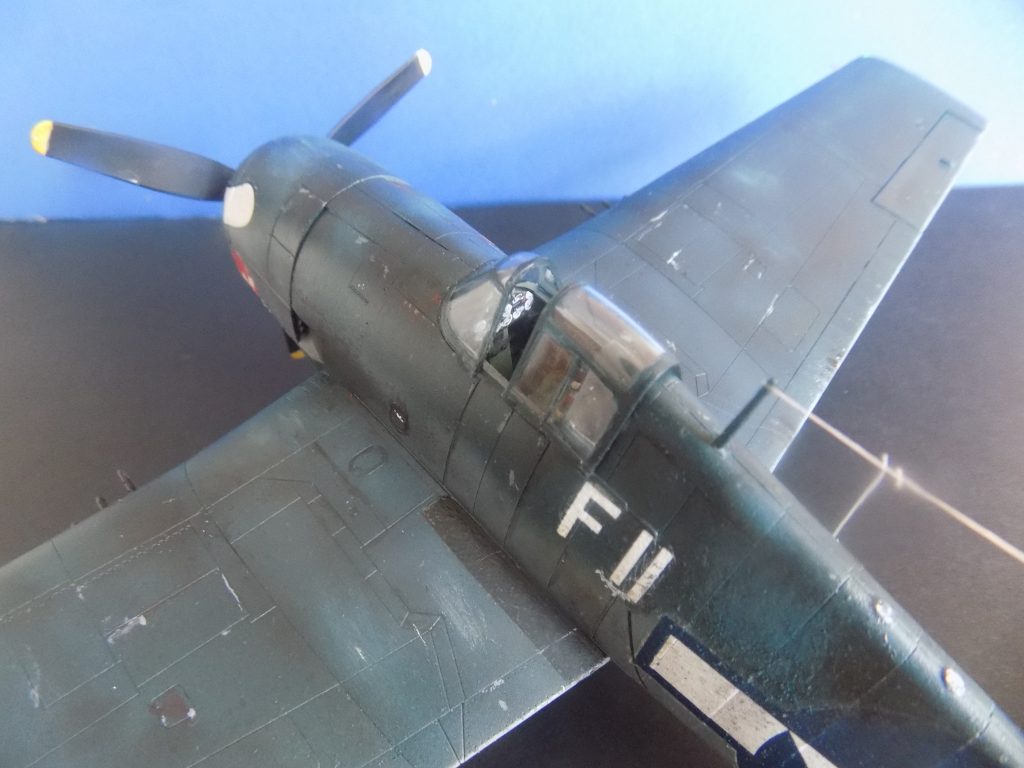
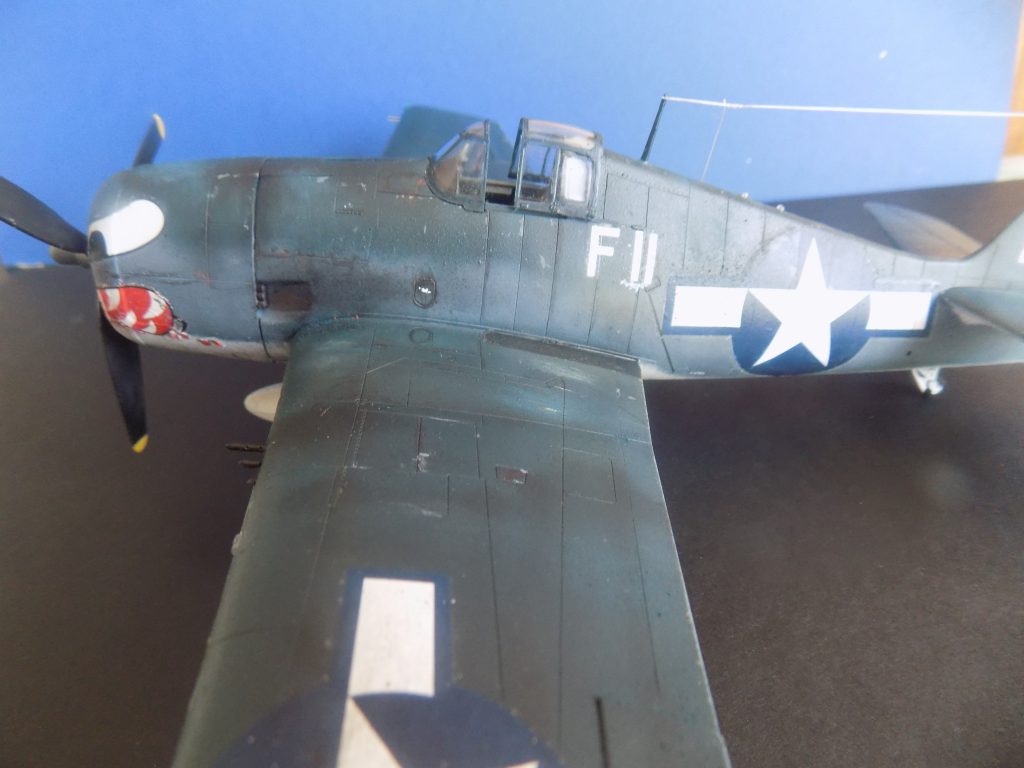
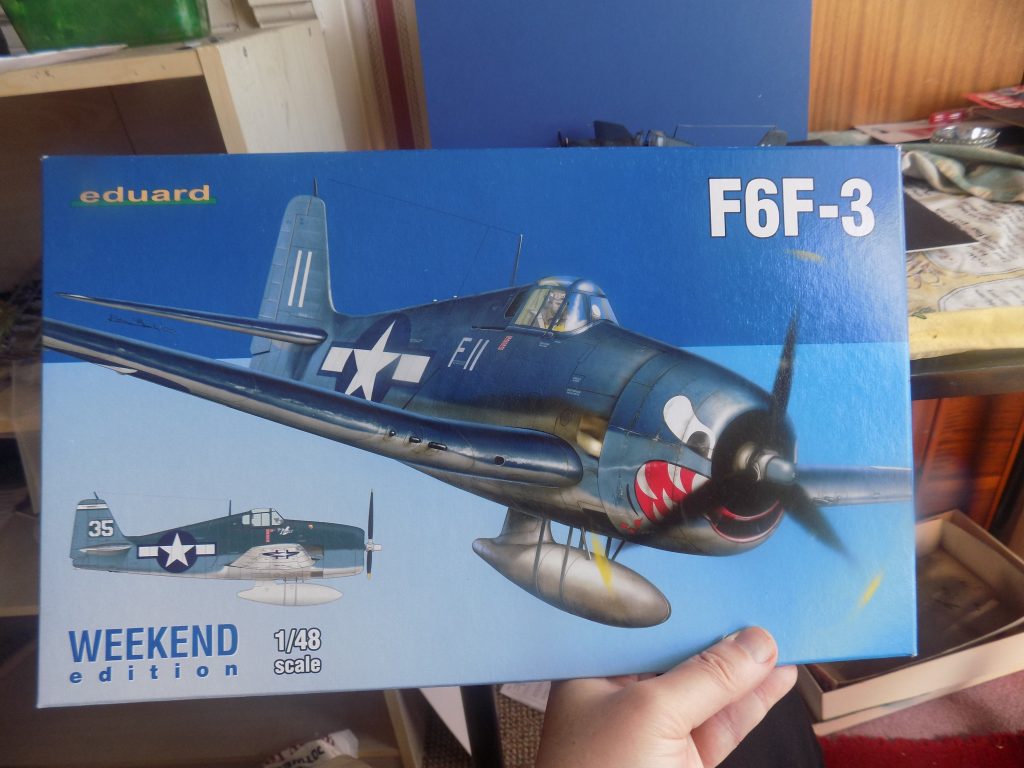
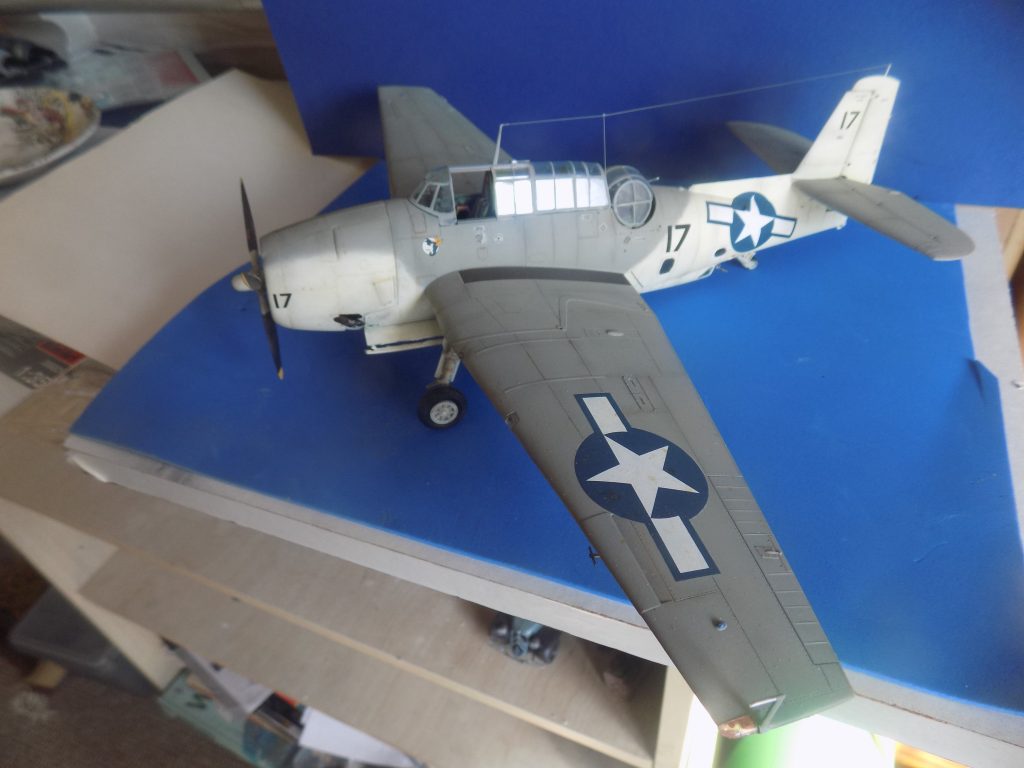
This was one of my earliest creations and if memory serves me correctly, it was manufactured by Accurate Miniatures, an American company that sadly is no longer in production. At the time, Accurate miniatures kits were considered the acme of the modelling world and were top notch quality. It was a difficult build and the ‘green house’ canopy was a challenge to say the least to mask and paint, in particular the rear ball turret. Luckily, the ‘greenhouse’ part lacked curved lines!
I remember feeling very proud of myself that I was able to achieve for the first time a realistic ‘feathered’ edge between the grey and white colours, no mean feat with a single-action airbrush and Humbrol paints! I like to think I have come a long way since then with my modelling skills, and I have long since upgraded to a double-action airbrush. But after all these years, my Avenger still sits proudly on my shelf ready for another sortie into the grey mists of the north Atlantic.
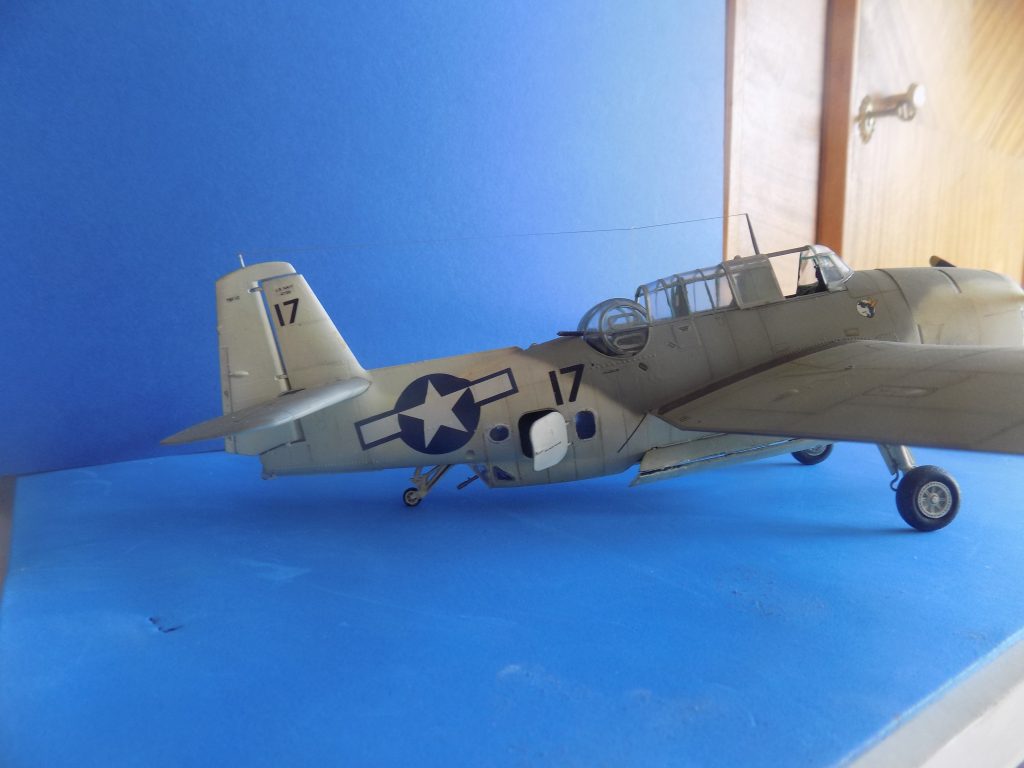
If you have seen this aircraft at museums or air shows, you realise it is BIG! It was the heaviest single-engined aircraft of WW2. Avengers were torpedo bombers manufactured by the Grumman company (TBM versions by General Motors) although this particular specimen is carrying four 500-pound bombs.
There were three crew members, pilot, turret gunner and bombardier/radioman/ventral gunner. It had a 7.62mm machine gun in the nose, a 50 cal machine gun in the rear-facing electrically-powered turret and a manually fired 7.62 mm machine gun mounted ventrally under the tail to defend against enemy fighters attacking from below or to the rear (see image above).
The Avenger entered service in 1942 and first saw action at the Battle of Midway in June where only six were present as part of VT-8 (Torpedo Squadron 8) . Of these, five were shot down. Despite this inauspicious start Avengers went on to play a vital role against surface forces in the Pacific war and in the North Atlantic campaign where many flew from escort carriers on anti-submarine patrols. The Atlantic scheme featured here is particularly attractive in my opinion. It was a TBF-1C that former US President was flying when he was shot down in in September, 1944.
